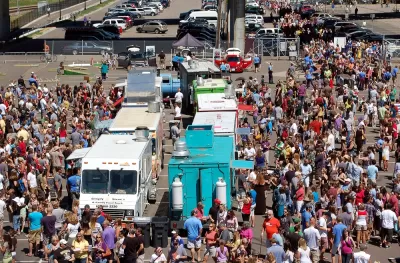The schedule for the Neighborhoods 2020 initiative in Minneapolis has been pushed as neighborhood organizations have pushed back on the city's efforts to remake the system in a more representative form.

Jessica Lee reports on the city of Minneapolis' ongoing process of reforming its neighborhood association system:
After heated meetings that exposed Minneapolis residents’ opposition to the city’s goal of asserting greater control over neighborhood associations this spring, city staff told Minneapolis City Council members Monday that they need more time to research the city’s current relationship with the organizations before making any changes.
The Neighborhoods 2020 program will miss its October 28 deadline to produce specifics on how to diversify the city's 70 neighborhood associations, reports Lee, sharing details of a statement by David Rubedor, director of Minneapolis’ Neighborhood and Community Relations (NCR).
"The project has moved more slowly than the city originally expected. Rubedor released recommendations for Neighborhoods 2020 in January, with the intention of establishing a new program by the end of 2019, when the mechanism that funds the groups, a tax district, dries up," according to Lee.
"Under the new timeline, the city is planning to release a draft of the new rules and accountability metrics in January."
FULL STORY: Minneapolis officials say they need more time to formulate neighborhood association plan

Planetizen Federal Action Tracker
A weekly monitor of how Trump’s orders and actions are impacting planners and planning in America.

Map: Where Senate Republicans Want to Sell Your Public Lands
For public land advocates, the Senate Republicans’ proposal to sell millions of acres of public land in the West is “the biggest fight of their careers.”

Restaurant Patios Were a Pandemic Win — Why Were They so Hard to Keep?
Social distancing requirements and changes in travel patterns prompted cities to pilot new uses for street and sidewalk space. Then it got complicated.

Platform Pilsner: Vancouver Transit Agency Releases... a Beer?
TransLink will receive a portion of every sale of the four-pack.

Toronto Weighs Cheaper Transit, Parking Hikes for Major Events
Special event rates would take effect during large festivals, sports games and concerts to ‘discourage driving, manage congestion and free up space for transit.”

Berlin to Consider Car-Free Zone Larger Than Manhattan
The area bound by the 22-mile Ringbahn would still allow 12 uses of a private automobile per year per person, and several other exemptions.
Urban Design for Planners 1: Software Tools
This six-course series explores essential urban design concepts using open source software and equips planners with the tools they need to participate fully in the urban design process.
Planning for Universal Design
Learn the tools for implementing Universal Design in planning regulations.
Heyer Gruel & Associates PA
JM Goldson LLC
Custer County Colorado
City of Camden Redevelopment Agency
City of Astoria
Transportation Research & Education Center (TREC) at Portland State University
Camden Redevelopment Agency
City of Claremont
Municipality of Princeton (NJ)




























